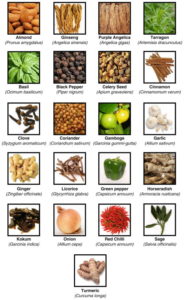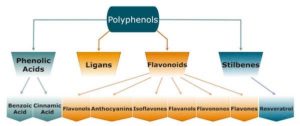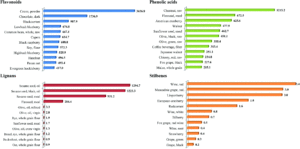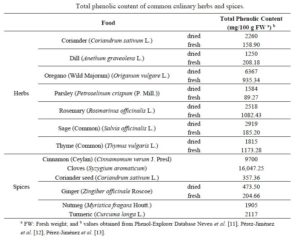Indian food is incomplete without use of spices. A single dish has so many variants in different parts of India because of the different spices used. Any recipe would be tasteless without spices. Ketogenic diet due to its unique combination of nutrients i.e. high fat, low carbohydrate and normal protein diet needs to be flavored with different spices in order to increase compliance. Having said that, taste is just one aspect of spices and there are many other important.
Spices are also known as functional foods which means a food containing health-giving additives. Today we are going to discuss the role of spices in neurological disorders. Spices have been used in cooking to add flavor and color to the food. A spice is a dried seed, fruit, root, bark, or flower of a plant. The use of spices has shaped a large part of the world’s history. In fact the Spice Wars was fought for over 200 years between the European powers in the 15th and 17the century!
In ancient times, many spices were used as medicines for treating several diseases such as rheumatism, body ache, intestinal worms, diarrhea, intermittent fevers, hepatic diseases, urinary discharges, dyspepsia, inflammation, constipation, and dental diseases. What was the active component in spices and how they exerted their action remained obscure to ancient people. Modern molecular tools have shown that spices have active components, called nutraceuticals that contribute to the plethora of properties. (Kannappan et al)
Spices with potential against neurodegenerative diseases

Note: – Kannappan et al research article have emphasized the phytochemical functions not only in spices or herbs but also from vegetables such as Onion, Green pepper etc which we too believed in highlighting in this article of spices.
Common names for the above-mentioned spices, herbs, seeds/nuts in India in Hindi language are as follow: –
Almond- Badam
Ginseng- Ashwagandha
Purple Angelica- Chorak (Sanskrit)
Tarragon-This herb is not popular in India so no specific name, but it is available online.
Basil- Tulsi
Black pepper- Kali mirch /Kali miri
Celery seeds- Ajmoda beej
Cinnamon – Dalchini
Cloves- Loung
Corainder seeds- Dhania beej
Gamboge- Jharambi (medicinal plant)
Garlic- Lassan
Ginger- Adrak
Licorice-Yastimadhu(Sanskrit) / Jesthmadh(Marathi)
Green pepper- Haree Shimla Mirch
Horseradish- Type of Muli in dried form
Kokum- Kokum
Onion- Pyaaj
Red Chilli- Lal mirch
Sage-Sefakuss
Turmeric- Haldi
Effects of spice-derived nutraceuticals on neurodegenerative diseases
Abeta amyloid beta peptide,
EGR-1 early growth response1,
AF64A ethylcholineaziridiniumion,
BDNF brain-derived neurotrophic factor,
CMS chronic mild stress,
EAE experimental allergic encephalomyelitis,
FBD a herbal formula composed of Poria cocos, Atractylodes macrocephala, and A. sinensis,
HUVEC human umbilical vein endothelial cells,
IL-1β interleukin-1β,
IL-12 interleukin 12,
ING4 inhibitor of growth protein 4,
GBM glioblastoma multiforme,
MB medulloblastoma,
MCAO middle cerebral artery occlusion,
MMP matrix metalloproteinase,
MS multiple sclerosis,
MPTP 1-methyl-4-phenyl-1,2,3,6-tetrahydropyridine,
MT-III metallothionein-III,
NF-κB, nuclear factor kappa-light-chain-enhancer of activated B cells,
NMDLA N-methyl-DL-aspartate,
6-OHDA 6-hydroxydopamine,
PMN polymorphonuclear leukocytes,
ROS reactive oxygen species,
SAC S-allyl cysteine,
STAT4, signal transducer and activator of transcription 4,
TNF-α, tumor necrosis factor-alpha,
TRAIL/Apo2L, tumor necrosis factor (TNF)-related apoptosis-inducing ligand,
TRPV transient receptor potential vanilloid,
VEGF vascular endothelial growth factor,
AP-1 activator protein 1,
ADP adenosine diphosphate,
CCR5 c-c chemokine receptor,
MAPK mitogen-activated protein kinase,
NB neuroblastoma,
TLR toll-like receptor
Phytochemicals generally are regarded as research compounds rather than essential nutrients because proof of their possible health effects has not been established. Phytochemicals under research can be classified into major categories, such as carotenoids and polyphenols, which include phenolic acids, flavonoids, and stilbenes/lignans. Elizabeth I. Opara et al, 2014.
Table 1 :- Type of Polyphenols

Table 2:- Mean content (mg per 100 g of food) of flavonoids, phenolic acids, lignans and stilbenes in the main food sources of these polyphenol classes. L. Valdés et al.2015

Polyphenols and polyphenol rich foods especially fruits, vegetables and green tea, are widely
known for their antioxidant properties. However, they exert other biological effects (anti-inflammatory, anti-cancer and neuro-protective)
Culinary herbs and spices have also been shown to possess these properties
Considering the bioactive properties that culinary herbs and spices possess, the need to determine
their intake is being acknowledged. Intake data are available for particular groups/populations.
However, the relatively low intake levels of culinary herbs and spices do not necessarily mean that they are of little value as their high polyphenol content, and thus ultimately the potential biological impact of this content, cannot be ignored.
| Culinary herb and spice intake studies. | |
| Study | Intake Data |
| Pellegrini et al. Determined daily intake of spices | 0.4 (1.3) g (3D-WR); 3.2 (2.7) g (FFQ) |
| using 3 day weighed food record (3D-WR) and food | |
| frequency questionnaire (FFQ). For the 3D-WR median | |
| data were obtained. For the FFQ, interquartile range | |
| data were obtained. n = 285; | |
| Subjects: men (n = 159) and women (n = 126); | |
| Country of study: Italy | |
| Carlsen et al. Determined herb and spice intake | Median estimates of total herb and spice |
| using a FFQ and 2–4 weeks later 28 days recording of | consumption: 2.7 g/person/day (range 0.19–45.0; |
| herb and spice consumption (HSR). n = 146; | Interquartile range 4.4) from the FFQ; |
| Subjects: men (n = 63) and women (n = 83); | 1.6 g/person/day (range 0–10; interquartile range |
| Country of study: Norway | 1.8) from the HSR; Main herb/spice contributors: |
| Basil (dried and fresh), oregano (dried), cinnamon, | |
| pepper, and spice blends | |
| Pérez-Jiménez et al. Measured the contribution of | 0.4 (0.3) mg/day/person; |
| seasonings (included non-herb and spice seasonings) to | Main herb/spice contributors: Ginger and parsley |
| daily polyphenol intake using 24 h dietary records every | |
| 2 months from 1995–1996 and the Phenol-Explorer | |
| database. Mean intake data obtained. n = 4942; | |
| Subjects: men (n = 2596) and women (n = 2346); | |
| Country of study: France | |
Form of spices:-
Polyphenols are found in numerous plant derived foods including herbs and spices, which, especially in their dried forms, generally contain relatively high levels of polyphenols compared to other polyphenol rich foods including broccoli, dark chocolate, red, blue and purple berries, grape and onion.

Combination of spices: –
Recent studies on the antagonistic and synergistic effects of combinations of individual polyphenols or combinations containing polyphenol rich foods.
| Combinations | Effect | Study |
| Epigallocatechin gallate (EGCG)(found in green tea) and curcumin (turmeric) | Synergistically cytotoxic to MDA-MB-231 estrogen receptor α (ERα) human breast cancer cells in vitro when compared to effects of the individual polyphenols. EGCG + curcumin also synergistically inhibited tumor growth within female athymic nude mice implanted with MDA-MB-231 estrogen receptor (ERα) human breast cancer cells compared to individual polyphenols. Proposed mechanism of action: Cell cycle arrest and decrease in the expression of vascular endothelial growth factor receptor in tumor may play a role. | Somers-Edgar et al. |
| Curcumin and resveratrol | Synergistic inhibition of growth of p53 positive and p53 negative human colorectal cancer HCT116 cells in vitro when compared to effects of the individual polyphenols. Curcumin and resveratrol combination also synergistically inhibited tumor growth within severe combined immunodeficient female mice implanted with HCT-116 cells. Proposed mechanism of action: Decrease in proliferation and induction of apoptosis, decreased NF-κB activity,inhibition of activation of epidermal growth factor receptor. | Majumdar et al. |
| Carnosic acid and curcumin | Combinations (at levels shown to be non-cytotoxic to normal human fibroblasts or human peripheral blood mononuclear cells) inhibited the growth of, and induced apoptosis in, HL-60 and KG-1a human acute myeloid leukemia cells. Proposed mechanism of action: Apoptosis associated with activation of caspases 8, 9 and 3 and Bid (a proapoptotic protein) which is a member of the Bcl family. No other Bcl proteins shown to be affected. No evidence that oxidative stress was involved. | Pesakhov et al. |
| Polyphenol rich herbs oregano, ajowan (Trachyspermum ammi) and Indian borage (Plectranthus amboinicus) | Addition of oregano extract increased the radical scavenging activity of ajowan and Indian borage extracts | Khanum et al. |
| Peppermint, rosemary, sage, spearmint, thyme. | All herb extracts inhibited the growth of SW-480 human colorectal cancer cells. Combinations of these extracts herbs had additive, antagonistic and synergistic effects, which were based on the combinations and/or the concentrations of the herb extracts used in the combinations. | Yi and Wetzstein |
Author Chris Kilham rightly said ‘You don’t have to do something exotic to enjoy the benefits of natural healing agents. So many things in your kitchen – common spices, common herbs and foods – have powerful healing agents as well’.
After reading this article we hope that you will use spices not only for its magical flavors but also because of its amazing health benefits
References
1. Kannappan et al. Neuroprotection by Spice-Derived Nutraceuticals: You Are What You Eat! Mol Neurobiol. 2011 October ; 44(2): 142–159.
2. Elizabeth I. Opara and Magali Chohan. Culinary Herbs and Spices: Their Bioactive Properties, the Contribution of Polyphenols and the Challenges in Deducing Their True Health BenefitsInt. J. Mol. Sci. 2014, 15,19183-19202.
3. L. Valdés et al. The relationship between phenolic compounds from diet and microbiota: impact on human health. Food & Function. Issue 8, 2015 Heneman, Karrie; Zidenberg-Cherr, Sheri (2008). “Publication 8313: Phytochemicals”. University of California Cooperative Extension.
4. Flavonoids”. Micronutrient Information Center, Linus Pauling Institute, Oregon State University, Corvallis, Oregon. November 2015. Retrieved 12 February 2017.
5. Pellegrini, N.; Salvatore, S.; Valtueña, S.; Bedogni, G.; Porrini, M.; Pala, V.; del Rio, D. ;Sieri, S.; Miglio, C.; Krogh, V.; et al. Development and validation of a food frequency questionnaire for the assessment of dietary total antioxidant capacity. J. Nutr. 2007, 137, 93–98.
6. Carlsen, M.H.; Blomhoff, R.; Andersen, L.F. Intakes of culinary herbs and spices from a food frequency questionnaire evaluated against 28-days estimated records. Nutr. J. 2011, 10, 50.
7. Pérez-Jiménez, J.; Fezeu, L.; Touvier, M.; Arnault, N.; Manach, C.; Hercberg, S.; Galan, P.; Scalbert, A. Dietary intake of 337 polyphenols in French adults. Am. J. Clin. Nutr. 2011, 93, 1220–1228.
8. Somers-Edgar, T.J.; Scandlyn, M.J.; Stuart, E.C.; le Nedelec, M.J.; Valentine, S.P.; Rosengren, R.J. The combination of epigallocatechin gallate and curcumin suppresses ERα-breast cancer cell growth in vitro and in vivo. Int. J. Cancer 2008, 122, 1966–1971.
9. Majumdar, A.P.N.; Banerjee, S.; Nautiyal, J.; Patel, B.B.; Patel, V.; Du, J.; Yu, Y.; Elliot, A.A.; Levi, E.; Sarkar, F. Curcumin synergizes with resveratrol to inhibit colon cancer. Nutr. Cancer 2009, 61, 544–553.
10. Pesakhov, S.; Khanin, M.; Studzinski, G.P.; Danilenko, D. Distinct combinatorial effects of the plant polyphenols curcumin, carnosic acid and silibinin on proliferation and apoptosis in acute myeloid leukemia cells. Nutr. Cancer 2010, 62, 811–824.
11. Khanum, H.; Ramalakshmi, K.; Srinivas, P.; Borse, B.B. Synergistic antioxidant action of oregano, ajowan and borage extracts. Food Nutr. Sci. 2011, 2, 387–392.
12. Yi, W.; Wetzstein, H.Y. Anti-tumorigenic activity of five culinary and medicinal herbs grown under greenhouse conditions and their combination effects. J. Sci. Food Agric. 2011, 91, 1849–1854.
